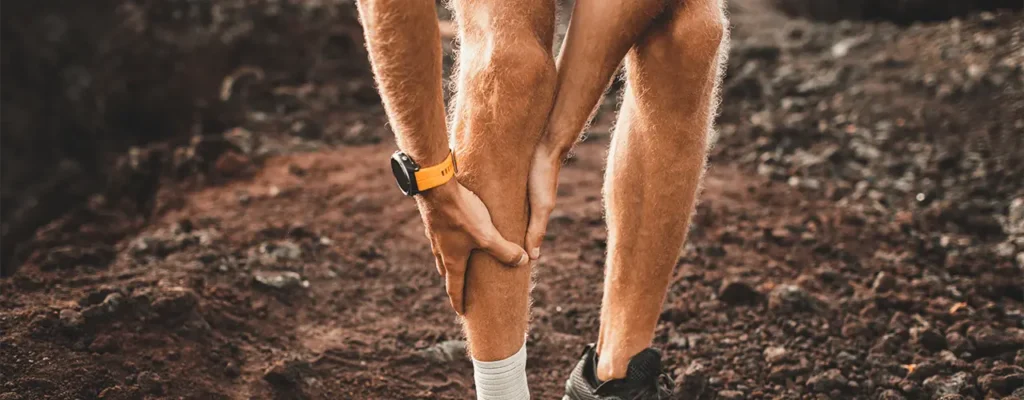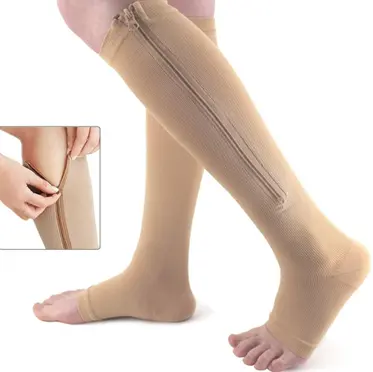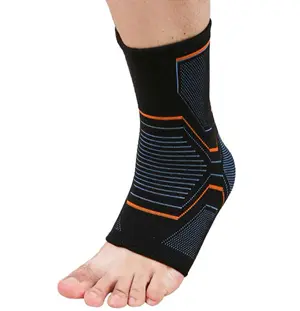Compression socks are designed to provide support to your legs and feet while also helping to reduce swelling.
If wearing compression socks helps improve circulation, then this could prove useful in reducing swelling from varicose veins-related issues like spider veins as well as improving symptoms associated with chronic venous insufficiency (CVI).
Here’s all you need to know about compression socks and especially how they work for swelling. So let’s get into this!

Understanding Compression Socks
If you’re experiencing swelling, compression socks are a good remedy to help relieve your symptoms. They are not a cure for chronic or serious swelling but can help reduce the discomfort and improve circulation by applying pressure to your legs.
But before we get into what they do and how they work, it’s important that we understand what they are:
How do Compression Socks work for Swelling?
Compression socks are designed to provide support to the legs and feet.
They are especially helpful at reducing swelling in the feet and ankles, which is a common issue for many people. In order to do this, compression stockings increase blood flow by applying pressure on the leg muscles and veins.
This increased circulation can help improve venous return—that is, bring blood back up toward your heart so it doesn’t pool in your legs.
Compression stockings can be worn for long periods of time, which makes them ideal for individuals who are experiencing swelling due to long flights or car rides that result in fluid buildup.
Because they’re easy to wear throughout the day, many find them useful outside of their homes as well; athletes often wear them during workouts that last longer than an hour or two because they want their legs to feel fresh afterward (i.e., not fatigued).
When to Wear Compression Socks?
It’s important to know when you should wear them if you are facing swelling.
People who sit for long periods of time
People who are truck drivers and office workers may benefit from wearing compression stockings while they work. This can help prevent or treat swelling in the lower legs caused by extended periods of sitting.
Read: How Compression Socks Can Benefit Pregnancy
Travelers are another group
Travelers could benefit from wearing compression stockings (aka hose) during their trip, as travel puts stress on the body and causes many symptoms of low blood flow including edema and fluid retention.
Some travelers also experience pain around their ankles or thighs due to long hours in a cramped position on an airplane or bus ride.
For those undergoing surgery requiring general anesthesia
It’s important that patients coming out from under sedation after surgery do everything possible beforehand so there will not be any complications once released into recovery afterward. Compression socks to use here are the finest consideration to compensate for mass development in blood veins!
Read: How To Wear Compression Socks
Considerations When Using Compression Socks
If you’re experiencing chronic or severe swelling, be sure to talk with a medical professional before using them as part of your recovery plan.
Compression stockings are designed to help treat mild cases of edema (swelling) caused by poor blood circulation due to sitting too long or standing up too quickly after being seated for a while
They shouldn’t be used as a primary treatment method for anything more serious than this type of simple injury-related edema.
The most important thing is to figure out how they work for you and if they help you
If you don’t know if compression socks will help your swollen legs, try some.
If they don’t work for you, then don’t buy them again!
There are many different brands and styles of socks to try out. Some people like ankle-highs; others prefer calf-highs.
There are also various levels of pressure that can be applied to the legs with different types of stockings or socks.
It may take some trial and error to find what works best for you specifically, but it is worth investigating as there could be great improvements in your comfort level and quality of life when wearing these garments regularly.
Compression socks can help reduce swelling but are not a cure for chronic or serious swelling
Compression socks are not a substitute for medical treatment, rest, medication, surgery, or other interventions. If you begin to experience any new symptoms after wearing them and/or notice that the symptoms are progressing in severity or frequency (or both), stop using them until you’ve consulted with your doctor about how best to proceed.
How To Choose The Best Compression Socks [Ultimate Guide]
Best Compression Socks For Men [Buyer’s Guide]
Best Compression Socks For Hiking [Buyer’s Guide]
Best Compression Socks For Nurses [Buyer’s Guide]
Types of Compression Socks available for Swelling
Compression socks for foot swelling

Compression socks can be an effective treatment for swollen legs, ankles, and feet. They help increase circulation to reduce swelling in the extremities. If you need to get rid of leg swelling fast and feel better, try wearing them for a few days.
Read: Compression Socks For Gout – How Effective Are They?
Compression socks for leg swelling

Compression socks for leg swelling are designed to provide support and compression to the lower legs and ankles.
They are designed to help reduce the risk of venous insufficiency, which is caused by a weakened vein wall not being able to withstand the pressure of blood flow.
They can also improve circulation and prevent swelling in the feet, ankles, and calves during periods of standing or sitting for long periods of time.
Read: What Are Leg Compression Sleeves? [A Complete Guide]
Also Read: Choosing Between Open Toe & Closed Toe Compression Socks
Compression socks for swollen ankles

Compression socks are also a good choice for swollen ankles.
The pressure of the sock restricts blood flow and reduces swelling in the ankle area.
If you want to wear compression stockings for swollen ankles, it is important to choose a pair that provides sufficient support for your foot and ankle.
Many people choose knee-high or mid-calf styles because they are comfortable and easy to put on when you’re sitting down or lying down.
Read: Compression Socks vs Compression Sleeves: What To Choose?
Also Read: Do Compression Socks Help Plantar Fasciitis?
FAQs – Frequently Asked Questions!
It can take up to 3 hours for the swelling to reduce. It might take up to 24 hours for that reduction in size and swelling to be noticeable, but you can still see improvement even after just a few hours.
It’s important that you wear your compression socks consistently until the swelling has reduced as much as possible so that your body doesn’t return back to its previous state.
Light compression helps with mild swelling conditions such as edema or puffy ankles due to water retention (also known as “chronic venous insufficiency”). This type of sock provides just enough pressure to improve circulation without causing any discomfort or pain.
Conclusion
Compression socks have gained remarkable recognition among their users after the exposure of their health-friendly benefits and solutions they make for swelling issues.
People who frequently admit swelling around their legs, ankles, and feet should definitely give a try to this amazing thing.
These socks maintain an adequate blood flow in edema and swelling issues of the body and ensure you suffer less through painful conditions such as swollen nodes around muscles.


